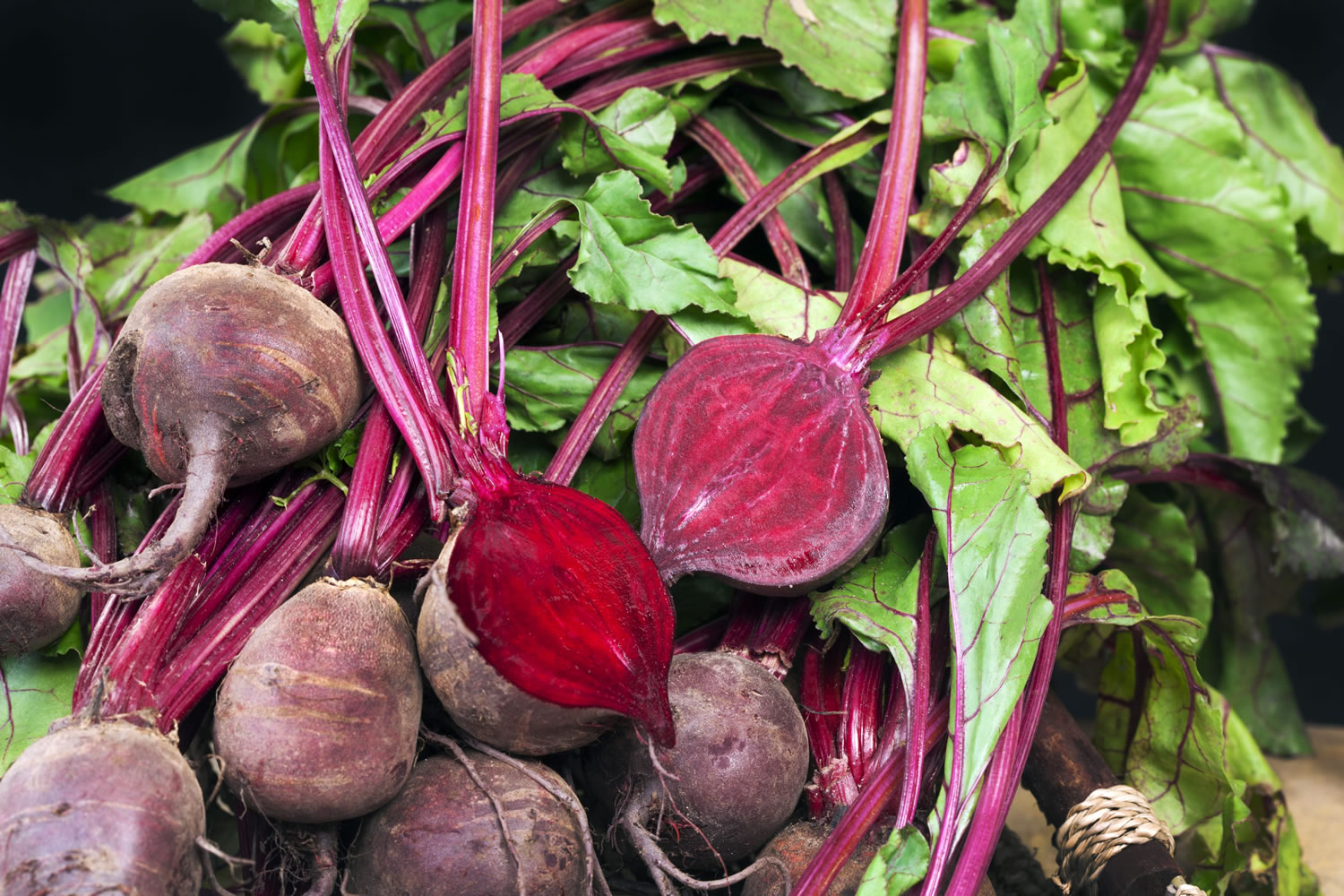What vegetable has twice as much natural sugar as corn, carrots, or tomatoes?
Answer: Beets.
Beets are related to chard, spinach, and quinoa. Beet greens contain measurable oxalate content so those individuals with kidney and gallbladder problems should specifically avoid eating the beet greens.
There are three types of beets:
• The “table” or “garden” beet, whose leaves and taproot we enjoy both raw and cooked. Root colors can range from deep red, to golden-yellow, to white, to rainbow-colored.
• The “sugar” beet is commercially grown for its high levels of sucrose and is used to produce table sugar.
• The “mangels” are beet varieties grown specifically for livestock feed.
Choose smooth, round beets that are of deep color and uniform size (preferably 1 1/2 to 2 inches in diameter). More than 3 inches in diameter, the beet can be fibrous and woody. Avoid those with bruises, shriveled skin, and soft or moist spots as well as those feeling light for their size.
If beet leaves are attached, they should be bright, dark green, and healthy (no wilting or yellowing).
If leaves have been removed, the beet should have a minimum length of 1 to 2 inches (each) of both stem and root remaining.
Since the 16th century, beet juice has been used as a natural red dye. When handling beets, this vibrant color easily transfers to hands, dish towels, cutting boards, counters, and sinks. Stains on hands can easily be removed with salt or lemon juice or prevented by wearing latex gloves.
Beets can be eaten raw or boiled, steamed, roasted, or baked. Raw beets are crunchy and firm. Cooked beets have a sweet taste and soft, buttery texture.
Beets can be stored for up to four weeks in the coldest part of the refrigerator. It is important to remove the leaves (if still attached) from the beets to prevent moisture from being drawn from the root. Leave 2 inches of stem attached to beet to prevent “bleeding” during cooking, and the taproot intact. Place unwashed beets in a sealed plastic bag from which air has been removed.
Wash beets before eating by rinsing under cool, running water. Take specific care not to break the skin so color and nutrients are retained. After cooking, the skin easily peels away. If leaves are still attached, remove, leaving 2 inches of stems as well as the taproot. The stems and taproot are removed after cooking.
Use beets of uniform size for even cooking. Cooking modifies the beet’s color. Addition of acid such as lemon juice or vinegar brightens the red beet’s color; addition of an alkaline ingredient such as baking soda often turns them a deeper purple. If salt is added after cooking, it will dull the color. Beets are done when a fork or tip of a knife can be easily inserted.
Beet leaves can also be enjoyed. Young leaves can be included raw in salad mixes. Similar to chard in flavor, beet leaves can be steamed, boiled, or saut?ed and served with butter or lemon juice drizzled over them.
Before eating, wash leaves in cool, running water to remove dirt and debris. Leaves can be stored separately from the beet roots in the refrigerator for up to four days in a plastic bag from which air has been removed.
Beets eaten closest to harvest have the best flavor. However, beets can be easily canned, pickled, frozen, or dehydrated for year-round enjoyment.
Visit the WSU Extension website for free recipes, information, and down-loadable how-to publications for each method. ext100.wsu.edu/clark/healthwellness/foodpreservation
Leigh Rosenberger is a WSU Clark County Extension master food preserver. For more information, call the Master Food Preserver hotline at 360-397-6060, ext. 5366, or visit clark.wsu.edu.



